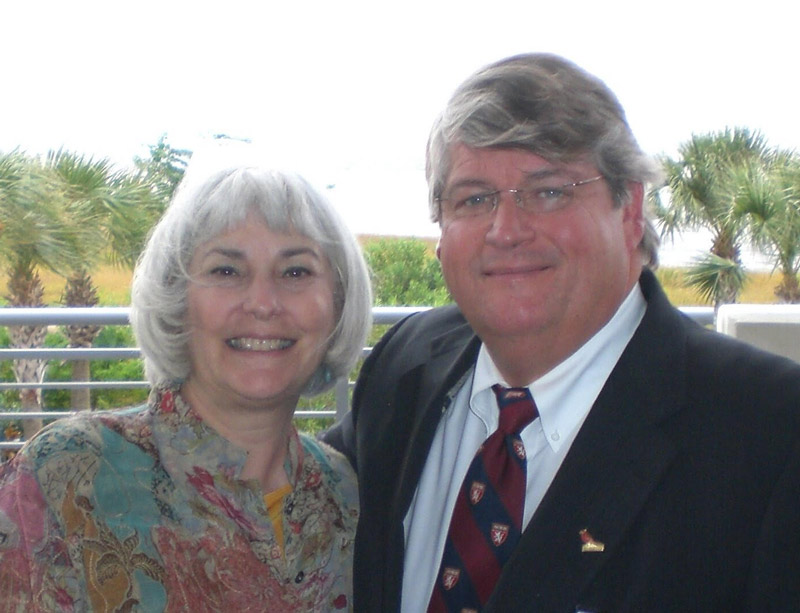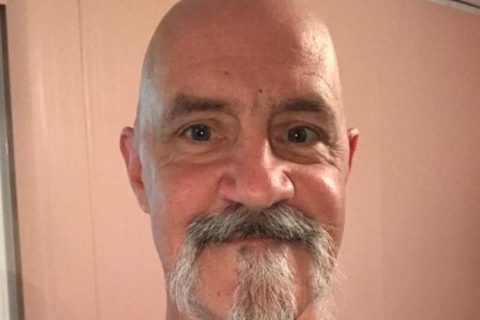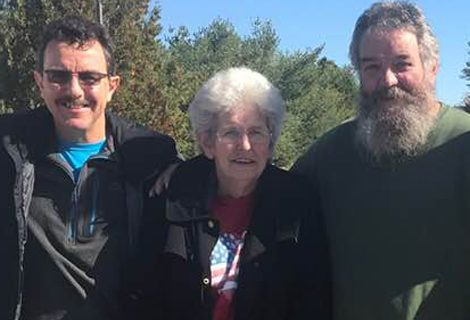Sugarbaker Legacy Includes 22-Year Pleural Mesothelioma Survivor

Fact Checked | Written by: Tim Povtak | Last Update: 10/25/2024 | 7 Min Read
Dr. David Sugarbaker left behind a legacy of surgical excellence, groundbreaking advances and unwavering dedication to his patients.
Mesothelioma survivor Sissy Hoffman is a living testament to that legacy.
Hoffman, 67, may be Sugarbaker’s greatest individual accomplishment: America’s longest-living pleural mesothelioma survivor.
She lives now in Savannah, Georgia, having spent the last 22 years proving just how effective Sugarbaker’s extrapleural pneumonectomy (EPP) surgery really was for mesothelioma.
She carries his torch every day.
“Dr. Sugarbaker not only extended my life, but he forced me to live a fuller life,” Hoffman said. “I’m a better person because of him. I was a better teacher. And through all these years, I wanted to make him feel like I was worth it. He’s with me now every breath I take.”
In late October, Hoffman and her husband Joe will fly with a photo of Sugarbaker to Italy, where they will light a candle and say a prayer in his honor at Vatican City, home of the Roman Catholic Church.
Sugarbaker Appreciation Goes Beyond Surgery
It wasn’t just the aggressive surgery that Sugarbaker did on Feb. 26, 1996. It was the way he continually inspired Hoffman after that surgery that left her in awe.
She was miserable after the surgery that removed an entire diseased lung, the lining around it, parts of her diaphragm and tumors throughout the thoracic cavity.
Sugarbaker needed 18 inches of stitches to close up her chest.
The pain killers made her sick. The following chemotherapy made it worse. She complained at every turn, but Sugarbaker responded much like he always did.
He smiled. He motivated. He made her set goals and talked constantly about hope as part of the equation.
“His favorite prescription was hope. ‘Without hope, you aren’t going any further,’ he would say. He told me I could go back to work in six months, if I really tried,” she said. “I thought that was crazy at the time. I was miserable. I was depressed at times. I thought I was going to die.”
Exceeding All Expectations
Six months after surgery she was back on the job, teaching school in Los Angeles, where she and her family were living.
Although patients diagnosed with pleural mesothelioma back then were living just six to nine months, Sugarbaker was raising the bar to one to two years and longer by refining his EPP surgery. He generously told Hoffman she might live up to five years if everything went right.
After all, she was young (47). She was otherwise healthy. And he was the world leader in treating mesothelioma, chasing a cure when no one else would even consider it.
She was lucky to find him, too, almost by accident when her mother called a doctor friend in Boston, and Sugarbaker just happened to be sitting in his office.
When she was first diagnosed, one prominent cancer center near her home in California recommended only palliative care.
Another in Los Angeles said they could start chemotherapy in three months, but there was little else they could do.
“They told me I’d be a respiratory cripple if I did this aggressive surgery,” she remembered. “No one else recommended it.”
Venturing into Uncharted Territory
Two days later, Hoffman and her mother were flying to Boston to meet Sugarbaker. A week later, she underwent the EPP surgery.
He was still a couple years away from creating his Mesothelioma Specialty Center at Brigham and Women’s Hospital in Boston when Hoffman arrived, moving her into mostly uncharted territory.
She would become his shining star.
Her support system at home was outstanding. Her husband Joe did everything around the house and cared for their two young children, allowing her to focus on recovering.
Her mother moved to Los Angeles to help, making sure she followed Sugarbaker’s prescription, reminding her daily this cancer can be beaten.
“The kind of support I had was critical. You would never make it alone with this,” she said. “My mother was invaluable. It was like she gave birth to me twice. My husband, the kids, and thousands of people praying for me, it was all part of getting through this.”
Making Her a Better Teacher
Her goal of returning to the classroom — which Sugarbaker insisted upon — became a motivating force to get stronger.
Hoffman proved to everyone that a person can live a productive life with one lung.
She still tired quicker than before, needing a pause to catch her breath at school, but she learned to adapt.
Through the years, she taught hundreds of children about overcoming long odds.
When the family moved back to the Savannah area, where she grew up, she taught special education classes for 13 years, working with children who had a variety of disabilities.
At the beginning of each school year, she would tell each class about her own “invisible disability,” encouraging students to share their stories, too.
Mesothelioma provided her with a teaching tool that helped her create a special bond with students.
As Sugarbaker did with her, Hoffman talked to kids about hope, setting goals and working each day toward those goals. She talked about shooting for the stars.
What she lacked in stamina, she made up with a passion to help each student, subconsciously determined to justify Sugarbaker’s faith in her.
Hoffman Became Sugarbaker’s Shining Example
Through the years, Sugarbaker used Hoffman in Boston as an example of what a mesothelioma surgical patient could do.
He often asked her to talk with new patients by phone, which she always did.
“When I became a service to other people, I became alive again,” she said. “I told him, ‘I’m going to take what you did for me and put it to good use.’”
She returned to Boston numerous times to speak at conferences. Her regular checkups went from every six months to every year.
They usually were scheduled around an event to show others how well she was doing. She talked with other doctors, surgical residents and new patients about her survival.
“It was like a glory role for me to play. I embraced that. I know the value of seeing firsthand how things work,” she said. “It was an honor to do that for Dr. Sugarbaker, letting him share my experience with so many others. It was more motivation for me to do well.”
Snorkeling with One Lung
Hoffman has lived the last 22 years determined to prove her wellness to Sugarbaker.
She would send him photos of her hiking with her husband in the rain forest, swimming off the coast of Panama, completing her daily workout routine.
“I remember going snorkeling in Panama, thinking if I drown, I will drown happy. I just wanted Dr. Sugarbaker to know what I had done,” she said.
It is why she is taking his photograph to Vatican City.
The last time they talked was on the 20th anniversary of her EPP surgery. It was a celebratory chat of two old friends, bonded by a rare and aggressive cancer with no definitive cure.
She was his greatest accomplishment in medicine. He was her hero.
He had already moved his practice to the Baylor College of Medicine in Houston. They talked about her making the trip to see him again.
“He told me, ‘When I wake up every day Sissy, you are my inspiration.’ I know I’m probably not the only person he ever said that to, but I cried when he said it to me,” she recalled. “He was such a humble man. Such a great man. A real hero.”





